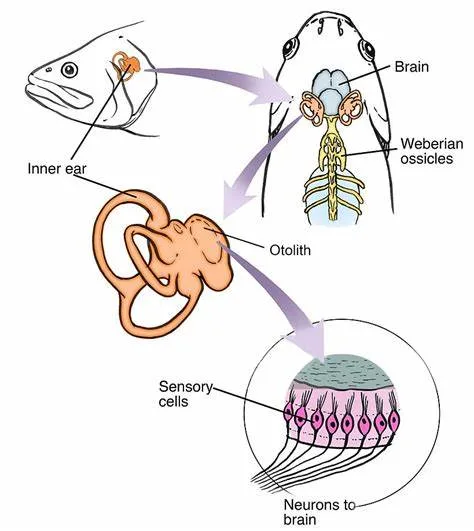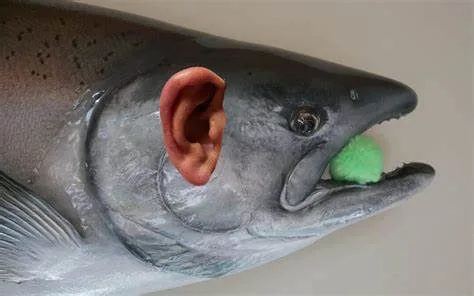What Fish hear, has always been a question. As kids, we were always told to be quiet, so we did not scare the fish. Trooping along the bank or wearing steel cleats on our wading boots surely would scare the fish.
One of my favorite ways to fish is using hoppers, and noisy surface lures. I learned early that if you could “plop” a hopper, the fish would hear and attack it. Lures like Jitterbugs, Tiny Torpedo’s, and Hula Poppers also made noise that fish would hear and attack. This is proof that fish can hear and locate noise, and their origins.
Electronic noise from fish finders is also a concern. Whales in the ocean seem to be affected when Sonar is deployed by the Naval ships. Playing loud music surely will not help you catch more fish. Intense vibrations cause noises that spook fish.
Noise under, and on the ice, can also be loud and scare fish away. The sounds of an ice auger, snowmobile, wheeler, footsteps, music, and loud noises, will be heard by the fish. They can also see shadows, movement, and other danger signals. I was once fishing along a Spring Creek in Pennsylvania. The large trout were feeding until a truck pulled up nearby. When the anglers slammed the truck door, 20 yards away, the fish dove for cover and the bite was gone.
Fish need to be survivors. There are plenty of predators and dangers that fish must overcome. Their camo pattern helps. The top of the fish is dark, and the bottom is white. Since most predators see in Black and white, the dark top blends in with dark rocks in a watershed. If a subsurface predator looks up, from under a fish, the white belly blends in with the sky.
But what do fish hear? Sound is normally felt. Unique cells can sense vibrations. Underwater sound travels 5 times faster than out of the water. Water amplifies noise. The lateral line of a fish “feels” noise vibrations. They feel the rock thrown into a pool, a loud step, motors, oars, and paddles. They have trouble knowing where the noise is coming from.
Fish do have ears with small bones called Otoliths. These small bones are also used to age fish. Otoliths recognize vibrations but not directions that they come from. Recent research suggests that the fish’s air bladder can interpret what direction noise is coming from. The air or swim bladder is a hearing pathway. Gas in the bladder expands and contracts, with water pressure and vibrations. Most fish have small bones and hairs in their inner ear that feel these vibrations.

Fish senses keep them alive. They See, smell, Taste, feel, sense, react, and hear what I s around them. Even in a noisy environment, the unusual noise will be detected. If the fish cannot recognize, and react to sound, they will not survive.
Wade slowly, step softly, and turn the music down if you want to catch more fish.
Montana Grant





